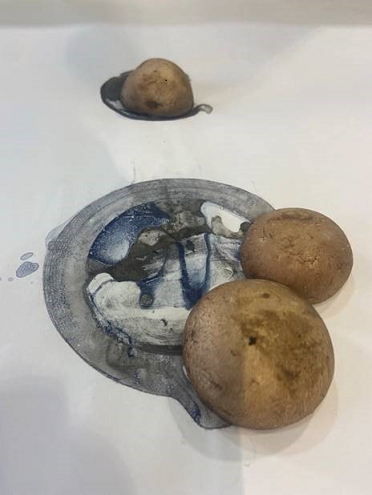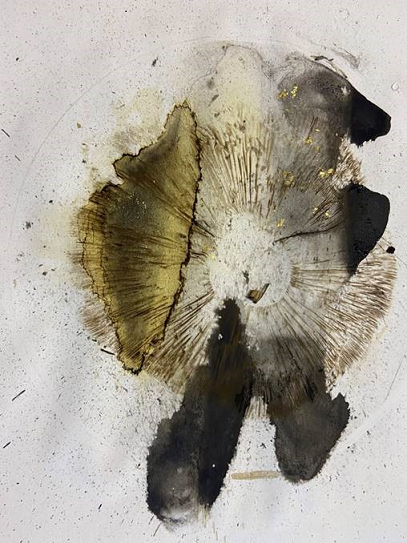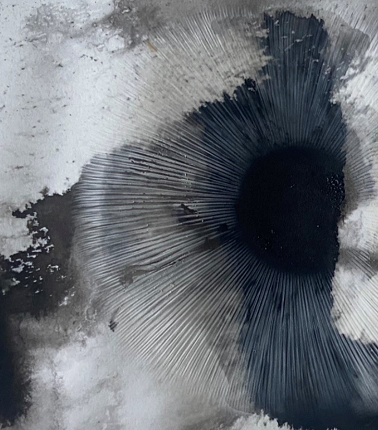We are all part of a system and cannot exist on our own.

The work of Artist in Residence Siobhan McDonald operates across various layers of thought and media - soil, clay, gas, ink, and painting. In true SciArt fashion, it champions the process; experimenting, exploring unknown territories and questioning what is missing. Siobhan sees art and art science collaborations as ways to create new knowledge and connect various disciplines.
During the presentation on 06/12/2022 Siobhán presented her work and collaboration with JRC soil scientist Arwyn Jones. She began with her production To Breathe for the Resonances III festival, datami, which had made her think deeply about how breath connects humans and the natural world in a symbiotic relationship. Resonances III led her to the STUDIOTOPIA project, a cultural exchange between different countries, artists and scientists, including the JRC. This is also how Siobhan met Arwyn, who opened her mind and helped her embed extraordinary aspects of research in artistic work: such as tracing the idea of air into soil. Siobhan expressed her interest in the interconnectedness, interdependence and importance of all living things, as well as her concern about our future living conditions.
LISTENING TO SOIL is a multi-disciplinary project with, at its core, a collection of soil samples from across Europe. These are the source of a series of works remembered in ancient archaeological practices. The project invites the audience to physically question our relationship to the environment and review the geology and fingerprint of soil. The work will connect to the elements and create an unexpected gathering place for visitors.
She recounted her study of soil, bog lands, viruses and bacteria which are emerging as the permafrost and icecaps melt. During the lockdown in Ireland, she extracted methane from the bog lands and used it to harvest ink, by placing this gas into carbonated charcoal. Thinking of the above/below divide of the Critical Zone, and how things might be able to survive on ruined land, she took mushrooms from the ground. She then placed her ink paintings in incubators under mushrooms, creating artworks that smell like the earth and derive directly from it. In this way, the artworks, through the amazing effects of ink, convey the threatening and lethal power of nature, its living and dark presence, and its poisonous and medicinal aspects. She described her visits to the JRC site, to the soil atlas and the soil library, with soils from each country. She experimented on soil samples using sound and investigated the intersection between materials, landscape, technology and culture; keeping in mind our ancient relationship with soil and wondering what the soils of the future will look like.

Arwyn commented on how an alternative representation of scientific work could be mesmerising. Moreover, he appreciated being able to talk with Siobhan about how soil is the Critical Zone, but is hugely undervalued by our urban society, which is detached from food production and nature. Together with Siobhan, he is hoping to develop a policy for soil protection and health in the EU, one of the new missions of the Horizon Europe program. He mentioned the interesting aspect of soil literacy, in which awareness, citizen engagement and the use of different media come together to communicate to society why soil is important and needs to be protected, especially for the Green deal to succeed.
They are hoping to represent current issues with an art installation of Siobhan’s work, at the upcoming World Soil Conference in Glasgow in 2022, and re-connect those who might have lost touch with soil.
Will the earth be able to sustain the rate of change that is taking place in our world?

Images credit: Siobhan McDonald 2020-2021
